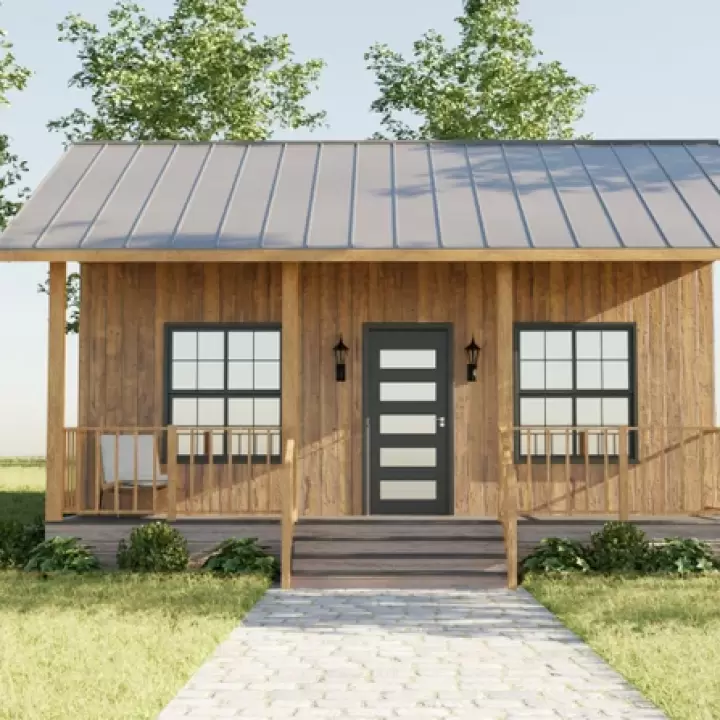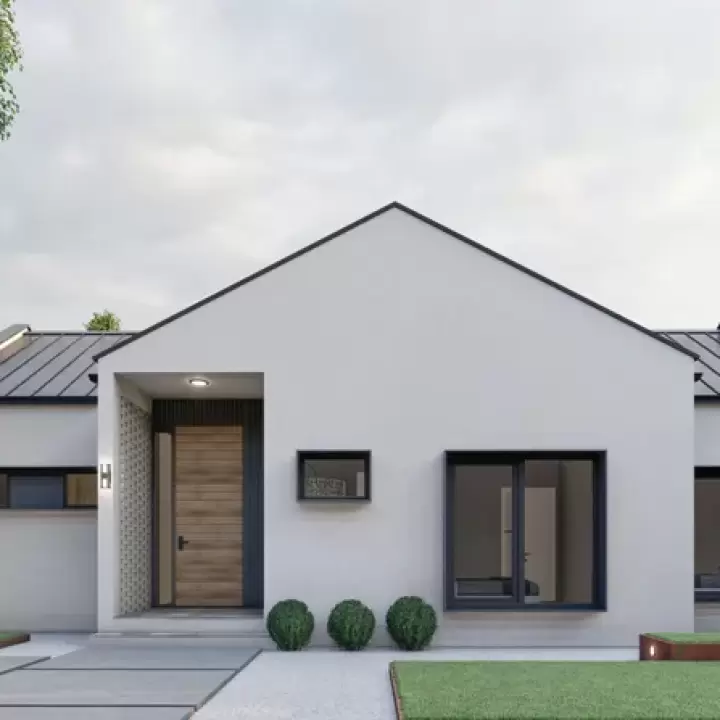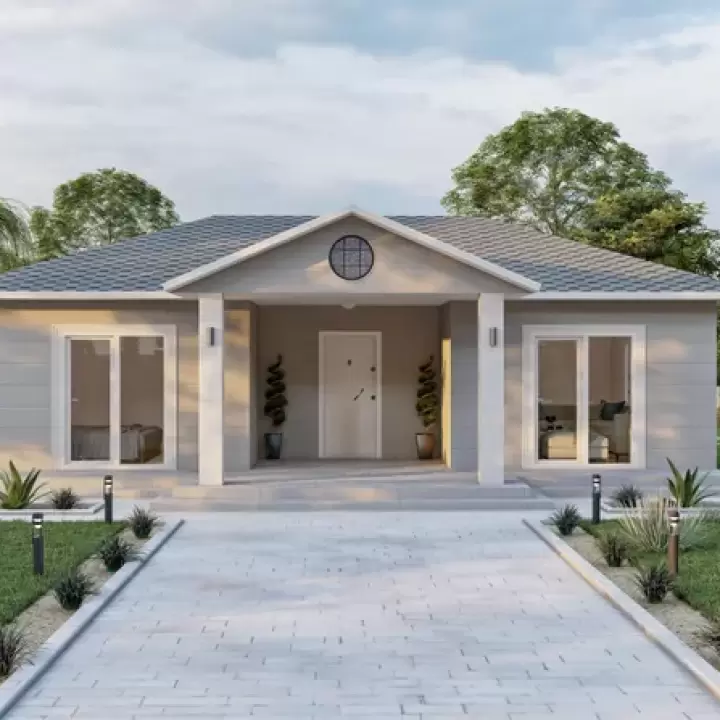
Build Your Own A-Frame Cabin: Step-by-Step DIY Plans and Blueprints
Building your own A-frame cabin is an exciting and rewarding project that combines the rustic charm of a cozy retreat with the functionality of modern living. With the right plans and blueprints, you can create a stunning A-frame cabin that suits your needs and reflects your personal style. This guide will take you through the process, from understanding the basic elements of the design to following step-by-step instructions to bring your dream cabin to life.
H1: Understanding A-Frame Cabin Design
A-frame cabins are known for their distinctive triangular shape, which is both aesthetically pleasing and structurally sound. The steeply sloped roof not only sheds snow and rain effectively but also allows for high ceilings and open interior spaces. This design is particularly popular in areas with harsh weather conditions, as the shape is naturally resilient to heavy snow loads and strong winds.
The 44' x 29' A-Frame Cabin DIY Plans provide a comprehensive blueprint for building a spacious and inviting cabin. This plan includes a total area of 1,839 sq.ft, with a well-thought-out ground floor and a comfortable first floor. The cabin features three bedrooms, two bathrooms, a large living room, a kitchen, a dining room, a porch, and other essential spaces that make it an ideal home or vacation retreat.
H2: Key Features of the 44' x 29' A-Frame Cabin
Ground Floor Plan (1,442 sq.ft)
The ground floor of this A-frame cabin is designed to maximize space and comfort. It includes the following features:
- Kitchen (133.50 sq.ft): The 15'-1'' x 8'-10'' kitchen is both functional and stylish, offering ample space for culinary creativity. It’s perfectly sized for preparing meals while still allowing for easy movement and organization.
- Living Room (507 sq.ft): The expansive 24'-11'' x 20'-4'' living room provides plenty of space for relaxation and entertaining. This room is the heart of the cabin, where you can gather with family and friends.
- Bedroom 1 (166.85 sq.ft): The 11'-10'' x 14'-1'' bedroom offers a peaceful retreat with ample natural light, creating a serene environment for rest.
- Bedroom 2 (174.40 sq.ft): This additional bedroom, measuring 11'-10'' x 14'-9'', is perfect for family or guests, ensuring everyone has a comfortable space.
- Dining Room (116.25 sq.ft): The 9'-10'' x 11'-6'' dining room is ideal for family meals and gatherings, providing a cozy yet functional space.
- Bathroom (61.35 sq.ft): The well-appointed 6'-11'' x 8'-10'' bathroom offers convenience and privacy, designed with both functionality and style in mind.
- Antre (200 sq.ft): The spacious 6'-11'' x 22'-8'' antre is a welcoming entrance that adds to the cabin's charm and provides practical storage space.
- Porch (255 sq.ft): The inviting 8'-6'' x 29'-10'' porch is perfect for enjoying the outdoors, offering a serene space to relax and take in the surrounding nature.
- Entrance (36.60 sq.ft): The 8'-6'' x 4'-3'' entrance ensures easy access to the cabin and adds to its overall appeal.
First Floor Plan (322.40 sq.ft)
The first floor of the cabin is designed to provide privacy and comfort:
- Master Bedroom (211 sq.ft): The luxurious 12'-2'' x 17'-5'' master bedroom is a private retreat within the cabin, offering ample space for relaxation and comfort.
- Bathroom (56.50 sq.ft): The second bathroom, measuring 4'-11'' x 11'-6'', adds convenience to the first floor, ensuring that all areas of the cabin are easily accessible.
- Hall (21.50 sq.ft): The 3'-11'' x 5'-7'' hall seamlessly connects the spaces on the first floor, maintaining a cohesive flow throughout the cabin.
Overall Dimensions and Structural Features
- Build Dimensions: 44'-11'' x 11'-6''
- Total Height: 24'-11''
- Ground Floor Height: 9'-10''
- First Floor Height: 8'-6''
- Foundation: Wooden
The A-frame design not only enhances the aesthetic appeal of the cabin but also maximizes space efficiency and structural integrity. The use of wood as the foundation material adds a rustic charm while ensuring durability and strength.
H2: Step-by-Step Guide to Building Your A-Frame Cabin
Building an A-frame cabin may seem like a daunting task, but with the right plans and a clear step-by-step guide, it’s entirely achievable. Here’s how you can get started:
H3: Step 1: Gather Your Materials and Tools
Before you begin construction, make sure you have all the necessary materials and tools. This includes wood for the foundation, framing materials, roofing materials, insulation, windows, doors, and interior finishes. Additionally, you’ll need tools such as saws, drills, hammers, measuring tape, levels, and safety gear.
H3: Step 2: Prepare the Site
Choose a suitable location for your cabin, considering factors such as accessibility, views, and the surrounding environment. Clear the area of any debris, level the ground, and prepare the foundation. The wooden foundation specified in the blueprint is both sturdy and easy to construct.
H3: Step 3: Build the Foundation
Start by constructing the wooden foundation according to the dimensions provided in the blueprint. Ensure that the foundation is level and properly anchored to the ground to provide a stable base for the cabin.
H3: Step 4: Frame the Cabin
Next, assemble the frame of the cabin. This involves constructing the walls, roof, and floor systems. The A-frame design requires precise angles to ensure that the roof slopes correctly and the structure is stable. Follow the blueprint carefully to achieve the correct dimensions and angles.
H3: Step 5: Install the Roof and Exterior
Once the frame is complete, install the roofing materials. The steeply sloped roof is a defining feature of the A-frame cabin, so take care to ensure it is properly aligned and securely fastened. After the roof is in place, install the exterior siding and windows to enclose the cabin.
H3: Step 6: Finish the Interior
With the exterior complete, focus on the interior. Install insulation, drywall, and interior finishes such as flooring, cabinetry, and fixtures. Pay attention to the details outlined in the blueprint, such as the layout of the kitchen, bathrooms, and living spaces.
H3: Step 7: Add the Final Touches
Finally, add any finishing touches to personalize your cabin. This could include painting, installing lighting, furnishing the space, and landscaping the surrounding area. These final touches will make your A-frame cabin feel like home.
H2: Why Choose an A-Frame Cabin?
A-frame cabins are a popular choice for many reasons. They are not only visually striking but also highly functional. The triangular design provides excellent stability and is well-suited to a variety of environments, from mountainous regions to forested areas.
The steep roofline allows for efficient shedding of snow and rain, making it ideal for locations with heavy precipitation. Additionally, the high ceilings and open interior spaces create a sense of spaciousness, making even smaller cabins feel larger and more comfortable.
H2: Frequently Asked Questions (FAQ)
H3: What are the benefits of building an A-frame cabin?
Building an A-frame cabin offers several benefits, including a unique and attractive design, efficient use of space, and structural stability. The steep roofline is ideal for shedding snow and rain, and the open interior provides flexibility in layout and design.
H3: How long does it take to build an A-frame cabin?
The time required to build an A-frame cabin depends on factors such as the size of the cabin, your level of experience, and the availability of materials. On average, it can take anywhere from a few weeks to several months to complete the construction.
H3: Can I customize the A-frame cabin plans?
Yes, A-frame cabin plans can often be customized to suit your specific needs and preferences. This may include adjusting the size, layout, or features of the cabin. However, it’s important to work with a professional designer or architect to ensure that any modifications are structurally sound.
H3: What type of foundation is best for an A-frame cabin?
The best foundation for an A-frame cabin depends on the site conditions and local building codes. In many cases, a wooden foundation is used for its ease of construction and aesthetic appeal. However, other options such as concrete or pier foundations may be suitable depending on the location.
H3: Are A-frame cabins energy-efficient?
A-frame cabins can be energy-efficient when properly designed and insulated. The steep roofline allows for good ventilation, and the triangular shape minimizes exposed surface area, reducing heat loss in cold climates. Additionally, modern insulation and windows can further improve energy efficiency.
H3: What materials are typically used in A-frame cabin construction?
Common materials used in A-frame cabin construction include wood for the framing and foundation, asphalt shingles or metal for the roofing, and a variety of siding options such as wood, vinyl, or metal. The choice of materials will depend on your budget, location, and personal preferences.
Building your own A-frame cabin is a fulfilling project that results in a unique and beautiful retreat. With detailed DIY plans and blueprints, you can confidently embark on this journey and create a space that’s both functional and visually stunning. Whether you’re building a weekend getaway or a full-time residence, an A-frame cabin is a timeless choice that offers both comfort and style.




